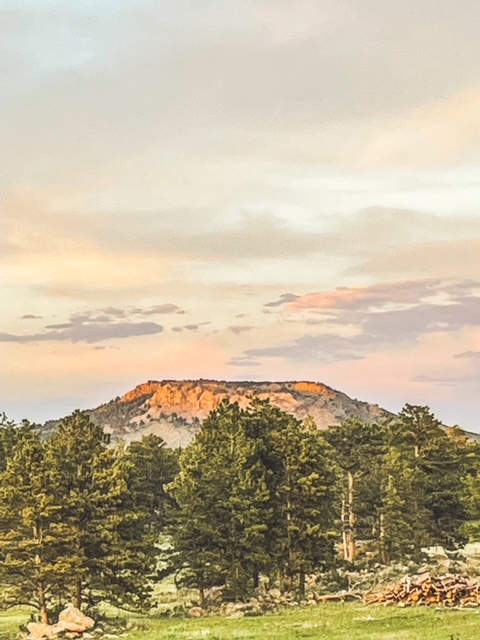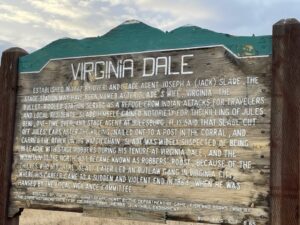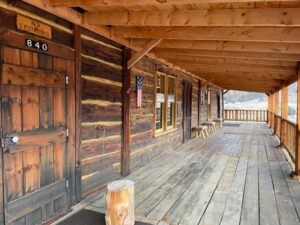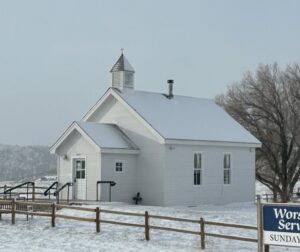I wish I had paid more attention in history class. I am not proud to admit it, but I spent more time in my 7th grade Colorado history class writing I Love Mitchell in my notebooks and trying to keep my teacher (who had a strict no bubble gum policy) from noticing the giant wad of Juicy Fruit in my mouth. I paid attention long enough to pass the tests, then whoop… right back out of my brain. Years later at Colorado State University, the 300 student, lecture style, required History class was one of the few I did not thrive in. The monotone professor droned on and on about who, what, where, and when, but not the WHY. As an English Major myself, I needed to hear about the characters and their stories to understand history, not the rote memorization of names and dates. So on I went, the history of our beautiful state of Colorado slipping into a part of my brain like the last faded file in a file cabinet, never to be thought of again. Until I moved to Virginia Dale.
View of Table Mountain/aka “Robber’s Roost”

In 2015, my family moved from bustling south Fort Collins to the remote and wild northwestern part of Larimer County previously known as Virginia Dale, technically now Livermore after the closure of the Virginia Dale Post Office. I loved the high rolling ranch land spattered with pine trees and rock outcroppings, but I fell even more in love with it after learning of the area’s history. Once we were settled into our new home, locals and neighbors told us about the outlaw Jack Slade who robbed the stage and watched for the cavalry atop Table Mountain (AKA Robber’s Roost), which happened to be the crown jewel of our view from our front window. The story of Jack Slade intrigued me, and I dug deeper into the local history.
The Virginia Dale Stage Stop was built in 1862 by Jack Slade, and it quickly became a major hub on the Overland Trail- it was where travelers could get a hot meal and a place to stay, house and water their horses, or get their wagons repaired by a blacksmith. Mail service passed through Virginia Dale six days per week, and on any given day 50-150 wagons went by on their way to Fort Laramie, Salt Lake or other destinations along the trail. Jack Slade, stage keeper by day and drinker by night, was a Jekyl and Hyde character who was known to get into trouble. One night after consuming a few too many whiskey’s at The Swing Station in LaPorte, Jack tore apart the bar, shot out the windows and all the bottles of liquor, and terrorized the patrons. But he was back the next morning with a heartfelt apology, some money for repairs, and a helping hand to clean up his mess. He was known for his sense of humor too. He killed Jules Beni in an act of revenge, sliced off the dead man’s ear, and attached it to his watch chain. He carried it around in his pocket for the rest of his days. Sometimes he would pull the ear out of his pocket and pretend to pay for his drinks with it, much to the surprise of those expecting payment. Legend has it that Slade robbed the stage carrying the cavalry’s wages, valued at over $1million in today’s money, and that the gold was never recovered. During this controversy, Slade was fired as stage keeper and moved to Montana with his common-law wife, Virginia, whom Virginia Dale was named after. Not long after, Slade was lynched by a group of men who decided to take the law into their own hands after they had tired of Slade’s drunken outbursts around town. Virginia pickled him in a casket full of whiskey and kept his body under her bed until spring came and the ground had thawed enough to ship him home and bury him. Now THAT is a story that makes history interesting!

Sign at the Virginia Dale State Stop about Jack Slade

Current photo of restored Virginia Dale Stage Stop
Now that I know about Jack and Virginia’s story, I can’t help but wonder about the other travelers- the families who passed through, the people who made it to their next destination, the many tragic stories of those who didn’t… the stories never heard. A few miles from us is the Virginia Dale Church- a historic one room chapel with a small cemetery. A fraction of those who perished along the Overland Trail are buried there- babies, children, families that were lucky enough to have headstones. Land not far from ours still has visible ruts from the stagecoaches, scars on the land from brave travelers 160 years before. Our 92- year old neighbor has found arrowheads, a pocket rosary, and other artifacts on his property. While I haven’t found anything special on our land, I imagine there are things there, hidden just beneath the surface, perhaps never to be found. I can’t help but feel overwhelmed with gratitude, in awe of those who came before me- who risked everything to travel west, to settle this land my family and I now get to enjoy. It is in these people’s stories, told and untold, in the tragic and fleeting beauty of them, that the true history of Colorado shines.

Current image of the Virginia Dale Church
~To learn more about the Virginia Dale Stage Stop and even get a tour, visit Virginia Dale Community Club
~To visit or attend a service at the Virginia Dale Community Church, visit Virgina Dale Church
*Please note that as I previously mentioned, history was never my forte, and I am not a historian! My ever so brief summary is part history and part legend (and that legend has many contradictory nuances). For the most historically accurate retelling of Jack and Virginia Slade’s story and an in-depth historical look at the Overland Trail, please read Death of a Gunfighter by Dan Rottenberg.
Comments
Chuck Yung
You might not be a historian, but you are certainly an excellent writer!
Jenna Golden
Thank you Chuck! I am so glad you enjoyed reading it. Fun history in our area!